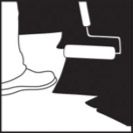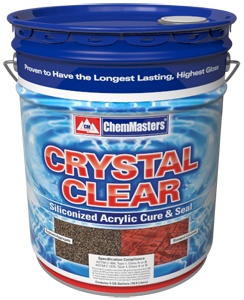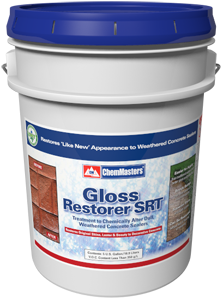Why Honesty Really is the Best Policy
Contractors who effectively manage customer expectations increase profitability by minimizing rework.
By Steve VandeWater
This article first appeared in the November-December 2015 issue of Concrete Construction Magazine and is reprinted with their permission.
Because customers pay a premium for decorative concrete, they expect perfection. When they notice small flaws or perceived defects, concerns arise that they have received less than they paid for.
Many times, owners’ complaints are justified. But very often they are not. Sometimes the owner simply has unrealistic expectations.
We’re all in business to make money, and decorative concrete should certainly be profitable for the contractor. But when it comes time to collect for completed work, problems are often encountered. Owners routinely find fault with their projects and withhold payment. To collect,
the contractor must perform additional work to correct the perceived problems or forfeit a portion of his bill. This is true whether there is an actual problem or it’s only in the customer’s mind. If a customer is convinced that there is a problem, usually no amount of talking
will convince him otherwise.
Because each return trip to a jobsite costs money, the goal is to turn out a great job, leave a satisfied customer, and move on to the next project. To do this, you must learn to manage your customer’s expectations. Educating the customer about potential problems before work
begins is vital. The more educated the customer, the fewer surprises at the end of the job, which translates into less rework and higher profitability.
Four impediments to satisfaction
During my years as a contractor I noticed a few recurring concerns that were common to almost every stamped concrete job. I also learned that when I addressed these potential problems before work began, customer complaints dropped dramatically. In my new role as a supply salesman,
I routinely see contractors lose money as a result of these same four issues:
- The likelihood that the color will not perfectly match the color chart.
- Construction is dirty and can damage a lawn.
- Although the sealer is shiny now, it will dull in a short amount of time.
- Cracks are possible and cannot be warranted against.
I am therefore amazed when contractors don’t include explanations and disclaimers in their contracts. For example, in my contract, I included a phrase which read, “It is concrete’s nature to crack. The best that I can do to control cracking is to thoroughly compact the stone base,
use fiber and/or rebar in the concrete, place expansion joint material where needed, pour at a reasonable slump, and properly install crack control joints. I will not be responsible for random cracks.”
Although the measures I took eliminated most random cracks, they still sometimes occurred. My disclaimer on the contract, signed by the customer, protected me from most complaints. The customer knew I had done my best to prevent cracking.
My contract had similar disclaimers regarding other potential problems, as well as the measures I would take to minimize them. All of my customers knew upfront that with a hand-crafted product like stamped concrete, color charts are unreliable. There are simply too many unknown
variables with raw materials, such as portland cement color, mix water, sand and aggregates, for a color chart to be accurate.
Real-world sealant performance
Sealer issues are probably the biggest reason for callbacks. Because homeowners see photos of glossy stamped concrete in magazines and on the Internet, they expect their jobs to retain that appearance indefinitely.
Acrylic sealer looks nice and shiny when it is fresh, but these types of sealers are soft and they abrade easily. Within a month or so after a job is complete, the sealer has begun to dull. Even though there is still sealer present, when an owner notices the duller appearance, he
thinks there is something wrong and demands that more sealer be applied.
However, unbeknownst to the owner, over-application actually causes additional problems, such as blushing (whitening), bubbling, and flaking. When these problems occur, the contractor is again called to fix them. It can become a never-ending cycle. However, if from the start the
homeowner expects the sealer to dull, he has no cause to complain.
By taking time to address potential problems, I developed a good relationship with my customers. They knew that I wasn’t trying to hide anything from them. In addition, because they trusted me, they were a bit more understanding about some of the minor flaws.
Of course, there were occasions when I lost a job by giving the owners too much information. I simply scared them away. These lost jobs were actually blessings in disguise. They eliminated customers who had unrealistic expectations and would have likely caused me headaches down
the road.
With all of that being said, a contractor’s first step in educating his customer is to educate himself. If the installer doesn’t know the potential pitfalls associated with his work, how can his customer?
Some problems can only be learned by experiencing them firsthand. However, most can be anticipated by reading magazine articles, product literature, tech data sheets, visiting manufacturers’ websites, or visiting online forums dedicated to decorative concrete.
After all, this industry has been around for a long time, and just about any imaginable problem has occurred and been solved. There are very few, if any, unknown variables. A wise contractor heeds the advice of those who have gone before, and shares this knowledge with his
customers.
Steve VandeWater is the manager of The Concrete Store in Fishers, Ind. He is a former Indianapolis-area contractor and creator of the Indiana Decorative Concrete Network website.
E-mail: svandewater@sagamorereadymix.com
Visit http://indecorativeconcrete.com for more information.

Crystal Clear’s proprietary siliconized acrylic
Formula has the longest lasting gloss.
|

Gloss Restorer SRT safely restores the beauty of dull, weathered acrylic sealer without bubbling, whitening or flaking.
|
Siliconized Acrylic Concrete Cure & Seal
super high gloss, non-yellowing compound
Restores Gloss
to Dull Weathered Sealers

 Seal the Deal
Seal the Deal




